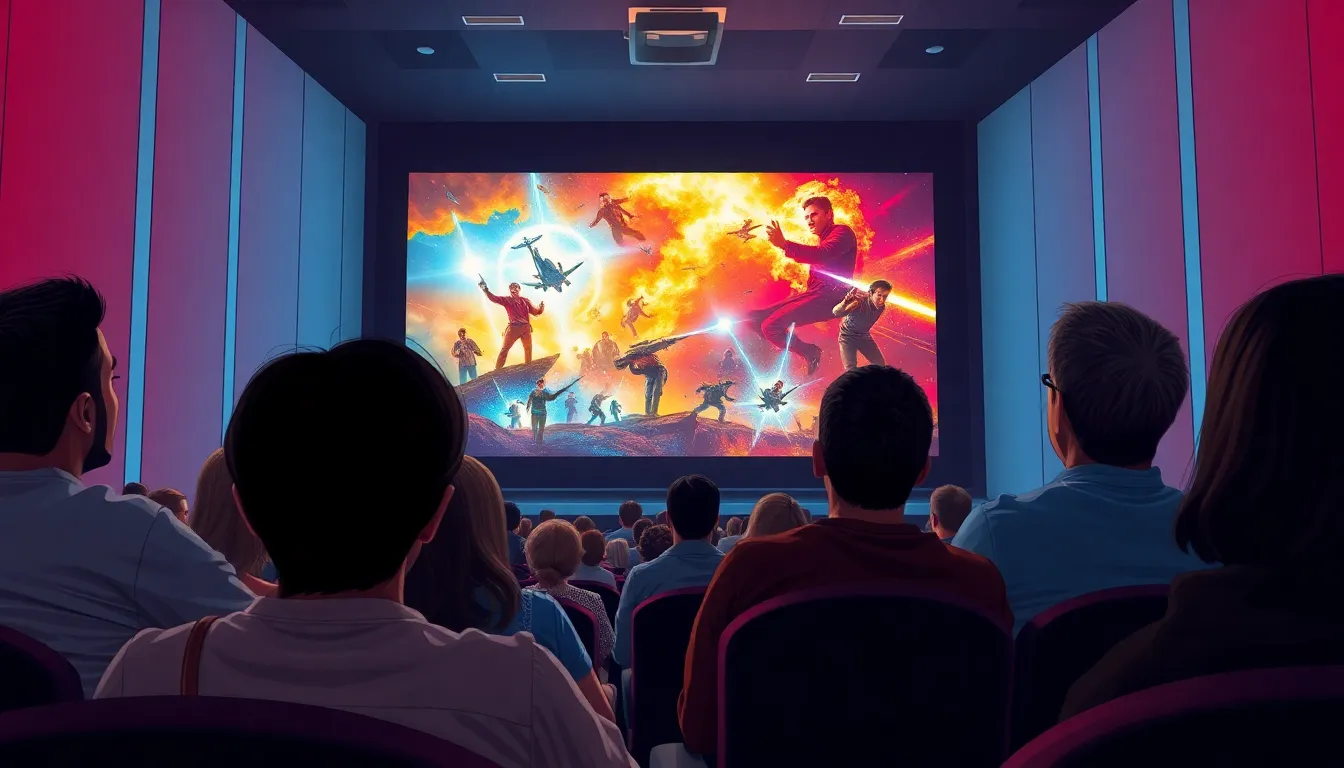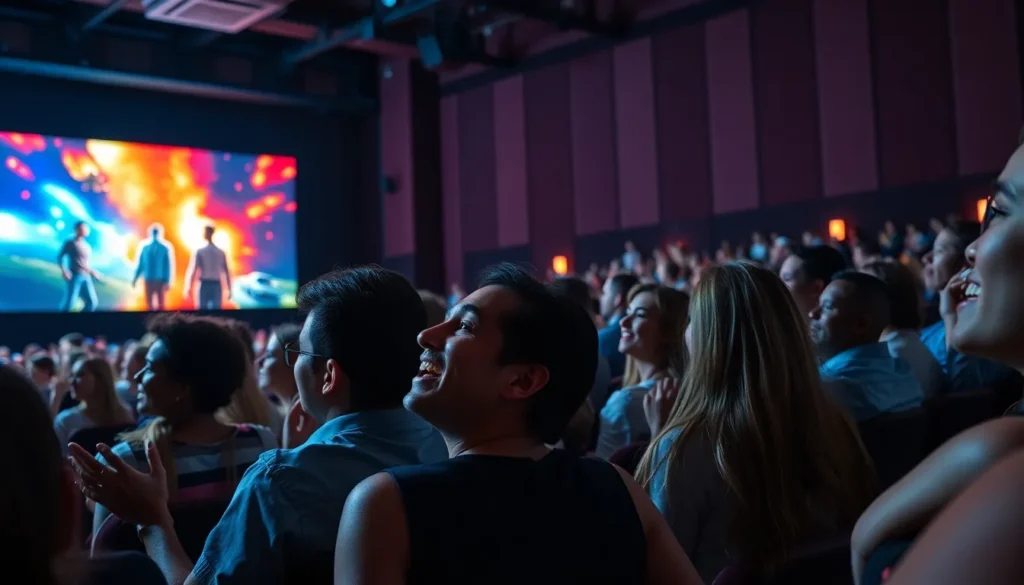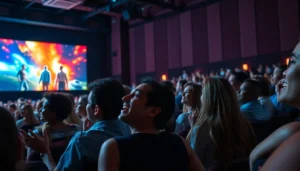Table of Contents
ToggleMovie trailers are the tantalizing appetizers of the film world, serving up just enough intrigue to leave audiences hungry for more. They’re like that friend who always tells you just enough gossip to get you curious but never spills the whole story. With a well-crafted trailer, studios can transform a simple flick into the next cinematic blockbuster, all while keeping viewers on the edge of their seats.
The Evolution Of Movie Trailers
Movie trailers have transformed significantly over the years. Their evolution reflects changes in technology, audience expectations, and marketing strategies.
Early Beginnings
Silent film era trailers appeared in the early 1900s. These brief announcements included title cards and simple scenes to grab viewers’ interest. The first known trailer for a film emerged in 1912, promoting the musical “The Fossils.” By the 1920s, sound technology allowed trailers to feature voiceovers and sound effects, enhancing viewer engagement. In this period, studios began recognizing the potential of trailers as promotional tools, leading to more creative presentations and storytelling.
The Rise Of Modern Trailers
Film trailers gained popularity in the 1970s and 1980s, driven by blockbuster films. The introduction of large-scale marketing campaigns helped studios connect with wider audiences. MTV’s influence prompted a new focus on editing styles that mirrored popular music videos. Today, trailers often showcase high-energy cuts, compelling visuals, and gripping narratives, often lasting two to three minutes. Digital platforms have expanded their reach, allowing trailers to be shared on social media and streaming services, further solidifying their role in film marketing.
The Purpose Of Movie Trailers

Movie trailers serve crucial functions in film marketing. They create excitement, draw attention, and provide essential information about upcoming releases.
Building Anticipation
Trailers build anticipation by showcasing thrilling moments and emotional scenes. Each cut offers a glimpse of the film’s tone, setting, and characters. Key scenes highlight conflict and resolution, engaging viewers and sparking curiosity. The incorporation of music and sound effects enhances emotional impact, making scenes more memorable. Effective pacing creates a rhythm that compels viewers to seek further details. Ultimately, a well-crafted trailer invites audiences to experience the upcoming film, fostering buzz before its release.
Informing The Audience
Trailers inform audiences about critical elements of the film. They reveal the plot’s central themes and introduce the main characters, allowing viewers to understand the story’s premise. Information about the cast and crew often appears, lending credibility to the project. Trailers might also include release dates, ensuring audiences are aware of when to expect the film. Providing insights into genre and target audience helps guide potential viewers’ choices. Through these details, trailers shape general expectations and excitement for the film.
Elements Of An Effective Movie Trailer
Effective movie trailers incorporate several key elements to captivate audiences. These elements enhance storytelling and create lasting impressions.
Storytelling Techniques
Strong trailers utilize effective storytelling techniques to engage viewers. They often establish a clear narrative arc, building tension and intrigue within a concise timeframe. Key plot points and character motivations emerge quickly, allowing audiences to grasp the film’s essence. A well-crafted trailer might focus on a character’s journey, drawing viewers into their emotional conflicts. Utilizing cliffhangers can also leave audiences wanting more. Demonstrating relationships captures attention and evokes empathy, enhancing the trailer’s impact.
Visual and Audio Impact
Compelling visuals and audio significantly elevate a trailer’s effectiveness. Dynamic editing creates a fast-paced rhythm that fuels excitement. Eye-catching visuals highlight pivotal scenes and breathtaking cinematography, enticing spectators. Combining music and sound effects amplifies emotional responses and reinforces thematic elements. A carefully selected soundtrack resonates with the film’s mood, enhancing the audience’s connection. In addition, sound design contributes to tension, making moments more thrilling. Altogether, these aspects create an immersive experience that entices viewers to watch the full film.
The Impact Of Movie Trailers On Box Office Performance
Movie trailers significantly affect box office performance. Their ability to attract audiences hinges on strategic marketing elements.
Case Studies
Examining specific films illustrates the correlation between trailers and box office success. “The Avengers” (2012) set a record with a $207 million opening weekend, partly due to its captivating trailers. Similarly, “It” (2017) used suspenseful teasers to amass $123 million on its debut, showcasing how effective marketing can lead to substantial financial gains. “Black Panther” (2018) generated immense buzz through visually stunning trailers, contributing to its $202 million first weekend. These examples highlight the critical role trailers play in influencing audience turnout.
Audience Engagement Metrics
Audience engagement metrics provide insights into trailer effectiveness. View count serves as a primary indicator; for instance, trailers reaching over 100 million views reflect strong interest. Social media interactions, such as shares and comments, also reveal audience enthusiasm. Films like “Frozen II” amassed 116 million views in 24 hours, translating to heightened excitement. Moreover, pre-release surveys show that movies with highly rated trailers consistently achieve higher box office earnings. Analytics reveal a direct link between engaging trailers and increased ticket sales, confirming their importance in successful film marketing strategies.
Movie trailers have become an indispensable tool in the film industry. They not only generate buzz but also shape audience expectations and influence box office performance. As technology and marketing strategies continue to evolve, trailers adapt to capture viewer attention in innovative ways.
With their carefully crafted narratives and stunning visuals, trailers serve as a vital bridge between filmmakers and audiences. The impact of a well-executed trailer can be profound, turning a film into a cultural phenomenon. As the landscape of film marketing changes, the significance of trailers remains steadfast, proving that they’re more than just previews—they’re a crucial element of cinematic storytelling.







